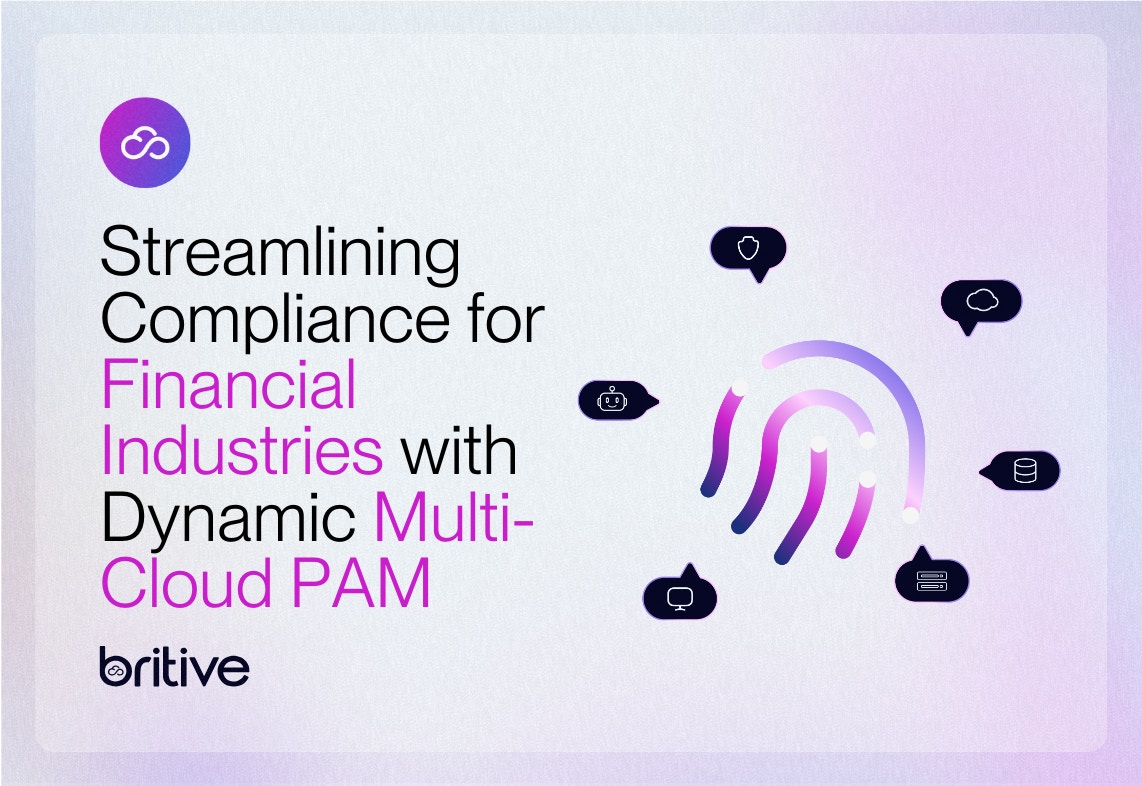


Back to resources
Mitigating API Token Risks for NHIs: Lessons from a Recent Security Breach
January 2025 / 8 min. read /

This blog aims to educate the industry about a recent security breach involving a known vendor (BeyondTrust) and discuss potential approaches customers and vendors can adopt to strengthen their security posture. For additional context, you can read more about the incident in this public post, which is further explained by the NHI Management Group.
Static Credentials: Like Leaving a Key Under the Mat in a Smart Home
Picture this: You’ve got a high-tech smart home with fingerprint locks and AI security. But instead of using those, you leave a spare key under the mat, just like in the old days. Guess what? The intruder finds it in seconds and waltzes right in.
Static credentials, like API tokens, are the "key under the mat" of cloud security—easy to find and exploit. In today’s dynamic cloud world, you need Just-in-Time (JIT) ephemeral credentials, like Britive offers, to grant temporary access and vanish before intruders get a chance. Don’t guard your cloud with outdated solutions!
US Treasury Hack and Legacy Privileged Access Management
Recently, there's been a lot of talk about a hack suffered by the US Treasury. Newly discovered Common Vulnerabilities and Exposures (CVEs) identified in the core components of the Privileged Access Management tool used by the US Treasury have been upgraded to the Known Exploited Vulnerabilities (KEV) catalog managed by the US Cybersecurity and Infrastructure Security Agency (CISA).
What is a CVE?
Common Vulnerabilities and Exposures (CVE) is like a reference list for known cybersecurity issues. Think of it as an index that helps security professionals keep track of and address potential threats. Each vulnerability gets a unique ID, making it easier to identify and share information about specific security flaws. This helps companies and developers stay informed and take action to protect their systems.
Identified Impacted Legacy PAM Modules and CVEs
- BT Privileged Remote Access (PRA) - CVE-2024-12356
- BT Remote Support - CVE-2024-12686
How are CVEs Scored?
CVE scores are determined using the Common Vulnerability Scoring System (CVSS). This system helps assess the severity of vulnerabilities by assigning a numerical score based on several factors. Here’s a simplified breakdown:
- Base Score: Measures the fundamental characteristics of the vulnerability, such as:
- Exploitability: How easily can the vulnerability be exploited?
- Impact: What kind of damage can the vulnerability cause?
- Temporal Score: Adjusts the base score over time, reflecting factors like:
- Exploit Code Maturity: Is there existing exploit code?
- Remediation Level: Are there ways to fix or mitigate the vulnerability?
- Environmental Score: Considers the specific context of an organization, such as:
- Modified Base Metrics: Adjustments based on how critical the systems are to the organization.
These factors combine to give a final CVSS score, typically ranging from 0 to 10, with higher scores indicating more severe vulnerabilities. This scoring helps prioritize vulnerabilities, aiding in better risk management.
- BT Privileged Remote Access (PRA) - CVE-2024-12356 – CVSS: 9.8
- BT Remote Support - CVE-2024-12686 – CVSS: 6.6
What Makes These CVE Scores Worrisome?
These CVEs highlight a command injection vulnerability that allows attackers to insert unauthorized commands into a system through a vulnerable application. Think of it like sneaking in extra unpaid stops on an Uber/Lyft driver’s route without them realizing. If exploited, this vulnerability could give attackers command-line access to steal, delete, or modify data or install malware.
How Does This Impact Legacy PAM Customers?
Most legacy Privileged Access Management (PAM) projects struggle to meet compliance requirements while also trying to secure an organization's most valuable data and resources. Managing access for both human and non-human identities with these older solutions often demands years of cybersecurity experience, a deep understanding of network and data structures, and the heavy workload of deploying, managing, and patching complex servers and various access points like proxies, gateways, and jump servers.
To make matters worse, there's also the need to maintain and report on static, over-privileged service accounts, using outdated session recording and password management methods.
What Can You Do?
The good news is there are alternatives to legacy PAM solutions that can be evaluated today. The bad news is most investments in legacy PAM solutions require ongoing support and maintenance throughout their lifespan.
How a Modern CPAM Solution Like Britive Could Have Helped
The breach highlights vulnerabilities associated with static API tokens and long-lived credentials. Let’s look at how a modern multi-cloud privileged access management (CPAM) solution like Britive could have mitigated or prevented some of the risks:
1. Just-in-Time (JIT) Access for API Tokens
- Challenge: Static API tokens increase the attack surface due to prolonged exposure and storage risks.
- Britive's Solution: Britive eliminates static API tokens by enabling JIT ephemeral access. Tokens are generated dynamically for specific tasks, with short lifespans, minimizing the risk of misuse or unauthorized access.
2. Centralized Visibility and Audit Trails
- Challenge: Lack of comprehensive oversight and monitoring of token usage can hinder detection of malicious activities.
- Britive's Solution: Britive provides centralized logging and monitoring, offering real-time visibility into all API access activities. Audit trails help identify anomalies quickly, enabling faster incident response.
3. Granular Role-Based and Policy-Driven Access
- Challenge: Static tokens often grant excessive privileges, increasing the risk of compromise.
- Britive's Solution: Britive enforces role-based access controls (RBAC) and policy-driven permissions, ensuring tokens are issued with least privilege required for the task.
4. Dynamic Credential Rotation
- Challenge: Static tokens are rarely rotated, making them susceptible to long-term misuse.
- Britive's Solution: Britive dynamically generates short-lived tokens, with no need for static credentials. Regular rotation ensures outdated tokens cannot be exploited.
5. Behavioral Anomaly Detection and Zero Trust Enforcement
- Challenge: Static tokens lack real-time behavioral monitoring and risk detection.
- Britive's Solution: Britive incorporates anomaly detection to identify unusual token behavior. Paired with Zero Trust principles, it ensures every access request is verified against security policies.
6. Token Vaulting and Secure Delivery
- Challenge: Storing tokens in insecure locations or logs increases the risk of exposure.
- Britive's Solution: Britive securely generates and delivers API tokens without the need for long-term storage, reducing risks tied to token theft.
7. Cloud-Native API Security
- Challenge: Traditional PAM solutions struggle to secure modern, cloud-native workloads.
- Britive's Solution: Designed for cloud-native environments, Britive secures APIs and tokens across hybrid and multi-cloud architectures, offering flexibility and enhanced protection.
The recent breach involving the impacted vendor highlights the critical need to move beyond static credentials and embrace modern, cloud-native solutions. By leveraging advanced CPAM capabilities like Just-in-Time (JIT) and ephemeral access provided by solutions such as Britive, organizations can strengthen their security posture, ensuring API tokens and other sensitive credentials are dynamic, secure, and fully aligned with Zero Trust principles.


